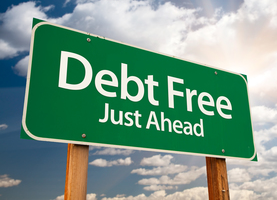by Semify
Copyright infringement violations can lead to serious consequences, including lawsuits, fines, and damage to your reputation. Whether you’re a small business owner, content creator, or simply someone sharing information online, it’s important to understand how copyright law works and how to stay on the right side of it. Taking a few simple steps can help you protect yourself from liability. This includes knowing what qualifies as original work, respecting others’ intellectual property, and using proper licensing. Below, we’ll explore key points that can help you steer clear of unintentional copyright issues.
The Duration of a Copyright Depends on the Year It Was Created
Understanding the lifespan of a copyright is crucial. Copyright protection doesn’t last forever, and knowing when a work enters the public domain can save you from accidental misuse. For example, most individual works are protected until 70 years after the creator’s death. However, if the work was created anonymously or as a work for hire by a company, the protection only lasts for 95 years from the date of publication.
Using a copyrighted piece without permission—thinking it’s old enough to be free for use—can land you in trouble if you haven’t checked the rules based on creation year and author status. Always verify the copyright expiration date before reproducing or distributing older materials, especially in marketing, education, or commercial use. Mistakes here can cost you time, stress, and money.
Using Licensed and Original Content in a Digital World
As digital content continues to dominate communication, the risks of copyright violations have grown. People often believe that because something is available online, it’s free to use—but that’s a costly mistake. Whether it’s music, photography, writing, or code, almost all digital materials are protected by copyright by default.
Spending on IT services worldwide reflects how vital digital content has become in modern business practices. In 2024 alone, companies around the globe invested $1.61 trillion in IT services, including content management and digital security. With this much money moving through the digital world, it’s no surprise that copyright monitoring tools are more advanced than ever.
Watch Out for Infringement Across Less Obvious Sectors
Many people associate copyright issues with music or film, but the reality is that violations occur in a wide range of industries—sometimes where you’d least expect them. Bail bond companies, for instance, might use stock imagery, contract templates, or marketing copy that is copyrighted. With approximately 9,383 bail bond businesses operating in the U.S., the competition for visibility is high—and so is the risk of using borrowed content without permission.
To avoid penalties, these companies must double-check the licensing of any digital or printed material they use. Whether you’re running a large firm or a small business, proper licensing and written permissions can make a major difference. Being proactive in this way helps protect your reputation and saves money that would otherwise go to legal defense or fines.
Avoiding a copyright infringement violation starts with awareness. Whether you’re handling digital media, reusing written content, or sharing designs, it’s critical to confirm you have the legal right to do so. Taking time to understand copyright duration, investing in licensed materials, and respecting intellectual property can help you maintain credibility and avoid legal trouble. With proper diligence, you can create and share with confidence—while protecting both your work and the work of others. In the end, protecting intellectual property isn’t just about legal compliance—it’s about respecting creativity and using your money wisely. If you are worrying about getting hit with a copyright infringement violation or you’re not sure how to begin working with commercial work, continue to research.



